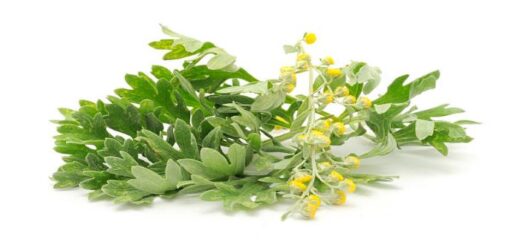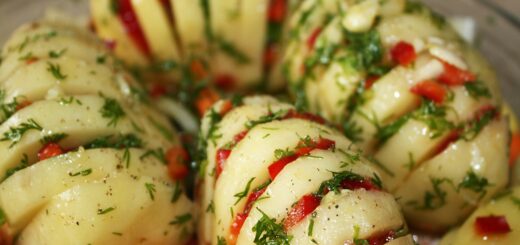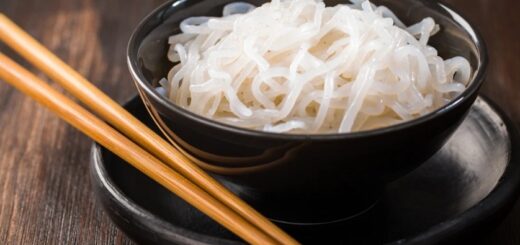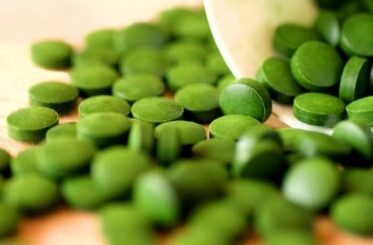7 Healthy Ways to Nutrition for Cortisone Treatment

Cortisone, which is a naturally secreted hormone in our body, is used as a medicine in the treatment of many diseases today. However, this treatment, which can have serious side effects, must be done under the supervision of a doctor. Especially high doses and uncontrolled intake of cortisone can cause serious side effects and decrease the quality of life of the patient.
Nutrition in Cortisone Treatment
- Salt Intake Should Be Reduced
- A Diet Rich in Calcium
- Fruit and Vegetable Consumption Should Be Increased
- Desire to Eat Sweets Should Be Suppressed
- Avoid Foods That Raise Blood Sugar Quickly
- Active Life and Sports Activities Should Be Increased
- What Should Those Who Take Cortisone Not Eat? Banned Foods
In this article, we have focused on the subject of cortisone for you. In order to minimize the side effects of cortisone in particular, we sought answers to the questions of “how should nutrition be while using cortisone” and “what should one eat while taking cortisone” . Here are the nutritional and health recommendations that will increase the quality of life of people who receive cortisone treatment…
The information is advisory; Consult your doctor for the healthiest and most accurate results.
What is Cortisone?
- Cortisone is a hormone found naturally in our body.
- It belongs to the class of corticosteroids and is secreted from the adrenal glands .
- The most important task of the cortisone hormone in the body is to balance fat and carbohydrate metabolism.
- It is secreted at different rates at different times of the day. The rate at which it will be secreted varies according to blood pressure and body temperature.
- Studies have shown that it is mostly produced in the morning hours. It is known that in case of anger, the body secretes approximately 10 times more cortisone than it produces under normal conditions.
- In newborn babies, cortisone secretion begins 3 weeks after birth and continues until death.
- Cortisone, which has anti-allergic properties, is a hormone that suppresses immunity and dries inflammation. Because of these properties, it is used in the treatment of many diseases.
Which Diseases Is Cortisone Used To Treat?
Cortisone is a hormone used in the treatment of many diseases in modern medicine. It is determined by the physician in which disease and in which dose it will be used. An overdose or abrupt discontinuation of cortisone therapy can cause serious side effects.
- The diseases in which cortisone supplements are given for treatment are as follows:
- cardiovascular diseases
- rheumatic diseases
- Diseases affecting the nervous system
- blood diseases
- allergic diseases
- Diseases affecting connective tissue
- Liver diseases
- In tumor treatments
- hormonal diseases
- Kidney and urinary tract diseases
- Eye diseases
- ulcerative colitis
- skin diseases
Nutrition in Cortisone Treatment: 7 Healthy Tips
- Cortisone is a highly effective treatment. However, during this treatment, there are many factors that should be considered, especially the dose of the drug and nutrition.
- Nutrition in cortisone treatment can be regulated by the dietitian with the most accurate directions. In general, the key points to consider are the same.
- Cortisone treatment raises sugar levels and causes edema by keeping water and salt in the body. During the treatment phase, blood pressure may increase due to sodium retention. In addition, calcium loss occurs in the bones.
- In order to eliminate the traces of all these side effects, it is necessary to pay extra attention to nutrition throughout the treatment. For this reason, patients undergoing cortisone treatment can get more detailed information about the cortisone diet by going through this process with a dietitian .
- After the cortisone treatment is finished, nutrition should continue in a healthy way. In this process, it is beneficial to be followed by a physician and dietitian and to acquire healthy eating habits.
Here are the important points that patients receiving cortisone treatment should pay attention to in their diet!
1) Salt Intake Should Be Reduced
- When the issue of nutrition comes to the fore while using cortisone, the first point that draws attention is the use of salt.
- Because; Cortisone reduces the reabsorption of salt from the kidneys. For this reason, patients using cortisone are recommended to reduce their salt intake during treatment, or even to switch to a completely salt-free diet.
- Salt is at the top of the list of things that should not be eaten in cortisone treatment.
- When it comes to salt, only the salt added to the meal should not come to mind. In this process, the unsalted version of almost every food, from food to soda, should be preferred. For example, unsalted bread can be consumed instead of regular bread. The goal is to reduce salt consumption to zero.
- Reducing salt while preparing a diet list in cortisone treatment helps to keep the weight gain that can usually occur during this treatment to a minimum.
2) Eat Rich in Calcium
- One of the side effects of cortisone is that it accelerates bone resorption.
- In these patients, the absorption of calcium from the intestines is reduced and osteoporosis may develop.
- In order to prevent this situation, it is necessary to increase calcium intake during the treatment.
- You can increase your daily calcium intake by including yogurt, milk, legumes and green leafy vegetables in your diet.
- If you are vegan, calcium-rich kidney beans, beans, chickpeas and dried nuts, especially unsalted almonds, are suitable options for cortisone treatment.
3) Fruit and Vegetable Consumption Should Be Increased
- In response to the question of how to eat while taking cortisone, emphasis is placed on fruit and vegetable consumption; This item is actually for everyone who wants to eat healthy.
- One of the side effects of cortisone is potassium losses.
- The lack of potassium absorption in the kidneys negatively affects the heart.
- It also causes muscle weakness in patients.
- In order to minimize potassium loss, it is recommended to focus on the consumption of vegetables and fruits during the treatment process.
- It is recommended to include fruits and vegetables with high potassium content in the nutrition plan.
4) Desire to Eat Sweets Should Be Suppressed
- If cortisone treatment and dietary change are carried out together, the efficiency of the treatment will increase and the process will be overcome more easily.
- In patients treated with cortisone, sugar metabolism is impaired. This situation increases the tendency towards sweet and fatty foods.
- The patient wants to consume sweet and fatty foods all the time.
- However, in this process, it is useful to stay away from sweet, oily and ready-made packaged foods.
- If the desire to eat sweets cannot be prevented, dates or dried fruits can be consumed.
5) Avoid Foods That Raise Blood Sugar Quickly
- After salt, the most important thing for those who are on a cortisone diet is sugar.
- One of the food groups that should be avoided during cortisone treatment is to stay away from foods that increase blood sugar quickly, in other words, are digested quickly.
- Therefore, it is necessary to exclude all fruit juices, white flour, sugar, potatoes, corn, rice from the diet plan.
6) Active Life and Sports Activities Should Be Increased
- If the cortisone nutrition program is applied correctly and sports are also included in life, weight gain, which is one of the most worrying things, will be less.
- During the cortisone treatment, light sports can be done in order to control weight and feel better .
- A brisk half-hour walk, especially outdoors, is good for the patient’s physical and mental health.
7) What Should Those Who Take Cortisone Not Eat? Banned Foods
The answer to the question of what should not be eaten in cortisone treatment usually consists of salty and sugary foods. Avoiding certain foods during cortisone treatment reduces the possible side effects of this drug. What should those who take cortisone not eat? Here is the answer…
- Salt
- Candy
- Fame
- Starch
- Salty Nuts
- Salty delicatessen products
- salty chips
- salty snacks
- fast food menus
- kebabs
- Lahmacuns
- Pickle
- homemade tomato paste
- Types of brine
- salty bread
- Cake
- Patty
- Cookie
- Rusk
- biscuits
- Salty and mixed spices
- salad dressings
What are the Side Effects and Harms of Cortisone?
Cortisone treatment can be in the form of a single dose injection or a long-term tablet. If the above-mentioned issues are not taken into account during the long-term treatment process, there may be serious side effects.
Side effects of cortisone include:
- Osteoclasis
- Hypertension
- Diabetes
- Cataract
- Eye pressure
- thinning of the skin
- easy bruising
- weakness in the muscles
- mood change
- Sleeping disorder
- Nausea
- Vomiting
- feeling of restlessness
- Decreased or increased appetite
- Weight gain or weight loss
- swelling in the abdomen
- bowel problems
- Edema due to salt and water retention in the body
- Kidney and heart failure
- hypothyroidism
- Decreased muscle mass in the body
- Fat accumulation around the shoulders and waist
- Imbalances in blood sugar
- High blood sugar
- Liver failure
- Cirrhosis
- increased stomach acid
- Ulcer formation in the stomach
- ulcerative colitis
- Epilepsy
- Cushing’s syndrome (hundreds per month)
Some of these side effects are common, while others are rare. It is known that these side effects, which reduce the quality of life of patients, occur 3 months after they start using cortisone. No significant side effects are observed in single-dose or short-term cortisone treatment.
The most frequently asked question by patients who will start cortisone treatment is “does cortisone make you gain weight?” is the question. Although some patients say that they gain weight due to cortisone treatment, there is no scientific research to prove this.
One of the important side effects of cortisone is Cushing’s syndrome, known as moon face. The release of too much cortisone hormone in the body causes Cushing’s syndrome.
Cushing’s syndrome affects each patient receiving cortisone therapy at different rates. The most prominent feature is the weight gain around the waist and belly. However, patients may have hypertension, attention and focus problems, and memory problems. Protein loss occurs in the body due to cortisone. This causes the muscles to weaken. Fat accumulation occurs in various parts of the body.
As a result of the accumulation of fat on the face, the face shape known as “aydede” is formed among the people. Fat accumulates on the shoulders, and after a while , an image called the buffalo hump occurs.
Other symptoms of Cushing’s syndrome include:
- Weakness
- Insomnia
- Headache
- Unrest
- Depression
- mood disorders
- Excessive acne, especially on the face area
- Excessive hair growth in women
- Irregular period
- facial redness
- extreme thirst
- frequent urination
- Thinning of the skin and easy bruising
- Osteoclasis
- easy fracture of bones
- Excessive weight gain (obesity)
- high blood sugar levels
- body bruises
- recurrent infections
- Delay in healing of wounds and infections
- Decreased sexual desire
- erection problems in men
- Infertility
- slowed growth in children
When Do Cortisone Side Effects Go?
- The side effects of cortisone are usually temporary unless they cause other illness or permanent damage to the body .
- Side effects often make daily life difficult and temporarily reduce the patient’s quality of life.
- It is essential to fully comply with the doctor’s directions in treatment. The doctor usually determines the dose as needed by the disease and the patient’s condition. When the treatment is terminated, it is not terminated suddenly, the dose of the drug is reduced day by day and the treatment is terminated.
- Side effects that occur during cortisone treatment usually disappear on their own 3 months after the treatment ends. In some patients, this period may take 1-2 years.
- The body soon regains its balance. However, in this process, it is very important to be under the control of a doctor and to follow the doctor’s recommendations completely.
How Is Cortisone Excreted From The Body?
- Cortisone is a naturally secreted hormone in the body. From this point of view, there is no such thing as a complete elimination of cortisone from the body.
- In the human body, the hormone cortisone is secreted until the moment of death.
- In the case of using cortisone as a medicine, the body returns to its own order after the treatment is over.
- Cortisone is secreted in the body again as it should be.











